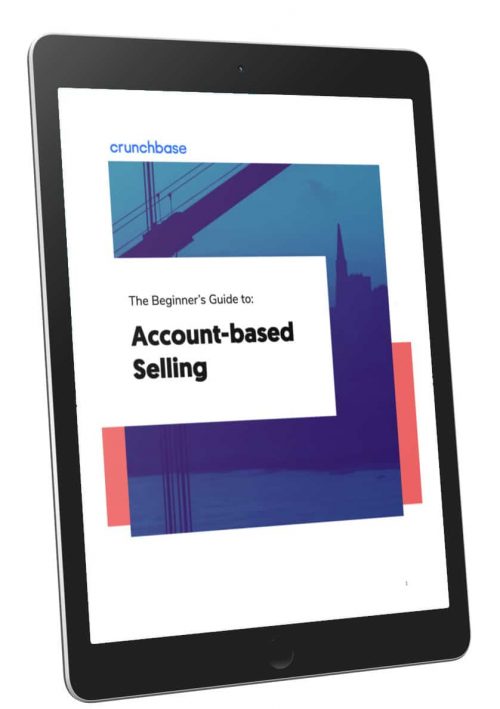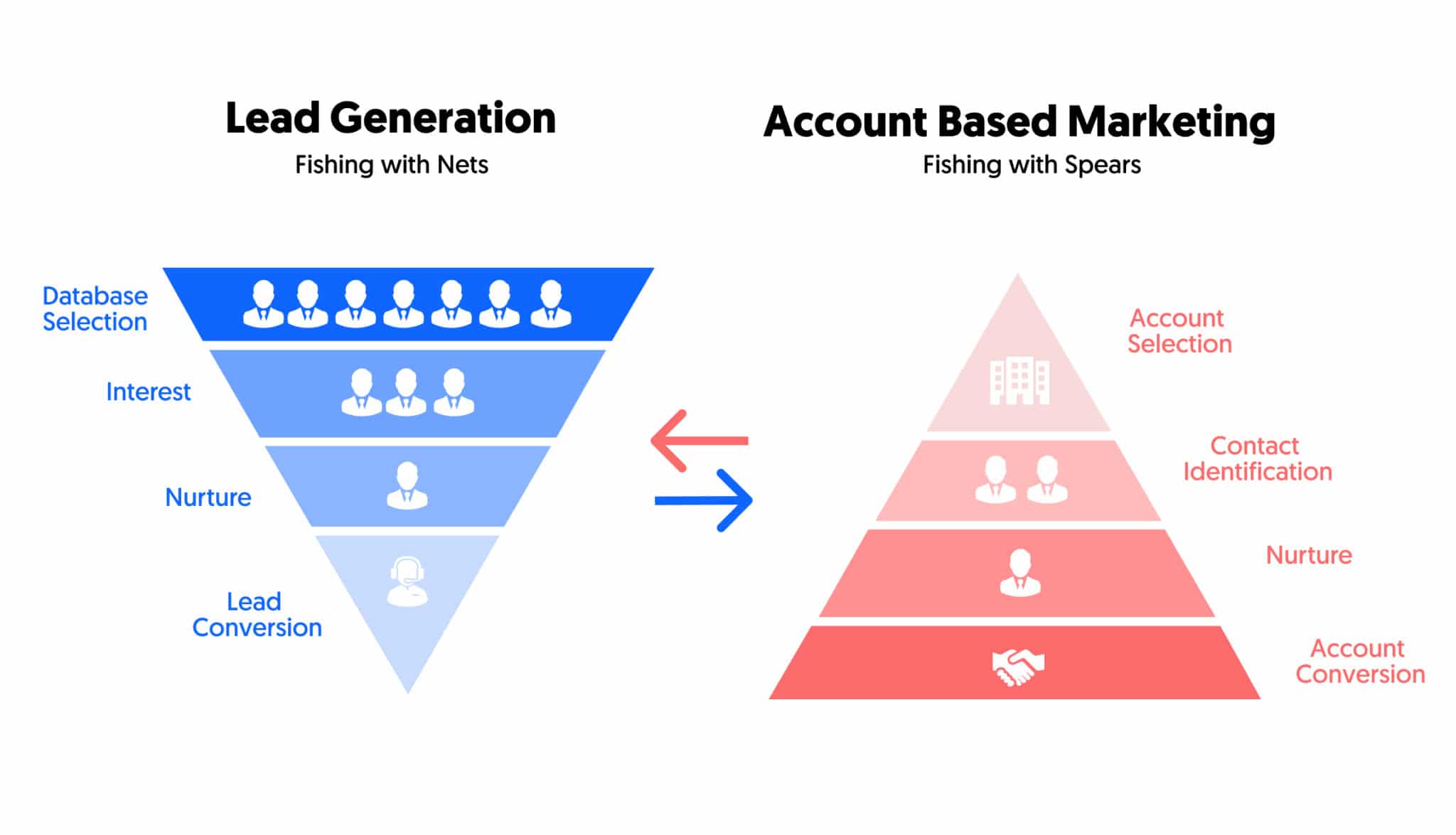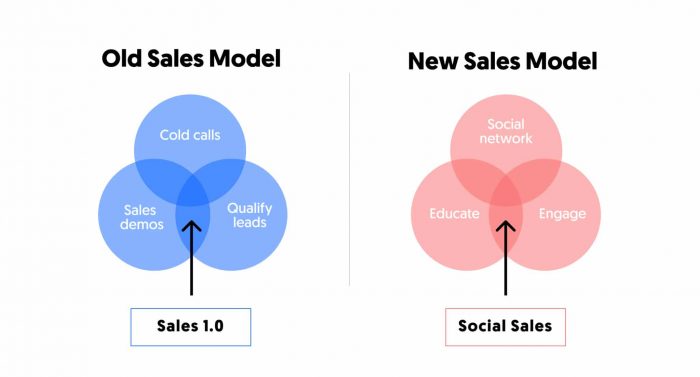The Beginner’s Guide to Account-Based Sales
Written by Amanda
Please join us in a moment of silence for contact-based outreach and meet account-based sales (ABS), your sales team’s new best friend.


[EBOOK] What is account-based selling and how it can help you increase close rate
Use this free guide to learn more about the basics of account-based selling and how it can help you and your team’s outreach tactics.
Contact-based outreach is a dead tactic and no longer the most effective way to market and sell your product. So what’s the new trending strategy that’s taken its place? Meet account-based selling (ABS).
What is account-based sales?
Account-based selling focuses on quality over quantity. Sales teams prioritize their prospecting efforts based on the companies they should be contacting rather than the individuals. They use data to find specific accounts that would benefit from their product and then devise customized, high-touch prospecting approaches for those target accounts.
By employing account-based selling, you ensure that your sales teams are focusing on high-potential, high-value accounts, making them more likely to close deals, hit their quotas, and grow your business.
What’s the difference between account-based selling and account-based everything?
While account-based selling focuses just on reorganizing your sales organization, account-based everything applies the philosophies behind account-based selling—a targeted, personalized sales approach that focuses on high-value accounts—to every corner of your organization: marketing (ABM, anyone?), sales, customer success, leadership, etc.
Is account-based everything the way of the future? Our magic 8-ball says, “signs point to yes,” but don’t feel pressure to roll out this strategy across your company in one fell swoop. Arm your sales teams with the data and tools they need to be successful at account-based selling and track their results. If you’re seeing those revenue numbers go up, collate your findings from the sales team’s implementation, and begin to roll out the strategy to other teams.
Both account-based selling and account-based everything require high-quality, in-depth data about prospects, leads, and customers. If you have the data and you know how to use it, you’re ready to give these strategies a whirl!
Key Metrics To Track in Account-Based Sales
Set yourself up for success by building metrics into your account-based selling process. Here are 5 key metrics to track:
|
Metrics To Track in Account-Based Sales
|
|||||||||||||||||||||||||||||||||||||||||||||||||||||||||||||||||||||||||||||||||||||||||||||||||||
|---|---|---|---|---|---|---|---|---|---|---|---|---|---|---|---|---|---|---|---|---|---|---|---|---|---|---|---|---|---|---|---|---|---|---|---|---|---|---|---|---|---|---|---|---|---|---|---|---|---|---|---|---|---|---|---|---|---|---|---|---|---|---|---|---|---|---|---|---|---|---|---|---|---|---|---|---|---|---|---|---|---|---|---|---|---|---|---|---|---|---|---|---|---|---|---|---|---|---|---|
|
Volume Targets
|
The volume of sales needed to meet your company’s revenue goals
|
||||||||||||||||||||||||||||||||||||||||||||||||||||||||||||||||||||||||||||||||||||||||||||||||||
|
Pipeline
|
The funnel that contains opportunities that a salesperson has identified
|
||||||||||||||||||||||||||||||||||||||||||||||||||||||||||||||||||||||||||||||||||||||||||||||||||
|
Target Accounts
|
The top priority companies that your sales team wants to turn into customers
|
||||||||||||||||||||||||||||||||||||||||||||||||||||||||||||||||||||||||||||||||||||||||||||||||||
|
Customer Acquisition Cost (CAC)
|
The cost spent acquiring customers divided by the number of customers acquired in a finite time period
|
||||||||||||||||||||||||||||||||||||||||||||||||||||||||||||||||||||||||||||||||||||||||||||||||||
|
Annual Contract Value (ACV)
|
The average annual contract value of your customer contracts
|
||||||||||||||||||||||||||||||||||||||||||||||||||||||||||||||||||||||||||||||||||||||||||||||||||
What’s an Ideal Customer Profile and why does it matter?
The Ideal Customer Profile (ICP) is the type of company that would benefit that most from your product or solution. The ICP is defined using firmographics, such as technographic data, company size, revenue, industry, and location.
Determining your ICP is the first step in implementing an account-based selling strategy. Once you know your IDP, your sales team can determine their target account list and begin personalized outreach.


Photo credit: Best Prospecting Methods (SalesHacker)
How to Find Your Ideal Customer Profile
To find your ICP, first determine a list of your most successful customers. Then, identify the characteristics, or firmographic data, that they have in common. Here are some key firmographics to get you started:
|
Type
|
|
Where to Find the Data
|
|---|---|---|
|
Technographic Data
|
The tools and technologies that a company purchases and uses
|
Available on Crunchbase with BuiltWith add-on
|
|
Intent Signals
|
Behaviors, typically around web content consumption, that indicate a company may be ready to take a buying action
|
Available on Crunchbase with Bombora
|
|
Revenue
|
A company’s annual income; your ICP will likely have a revenue range
|
Available on Crunchbase for free as a logged-in user
|
|
Industry
|
A group of companies that offer similar types of goods or services
|
Available on Crunchbase for free (Known as category / category groups)
|
|
Location
|
Where the company is located; can be segmented by city, state, region, country, or continent
|
Available on Crunchbase for free
|
How to Build Your Target Account List
So you’ve found your ICP. Now it’s time to create your target account list, the list of priority companies that your sales team wants to convert.
1. Determine your targeting criteria
Not every firmographic is created equal. To start off, pick the three most important attributes that you want your target accounts to have.
Tip: Remember you can always add or subtract criteria to narrow or broaden your list as needed.
2. Audit your existing accounts
Once you’ve determined your targeting criteria, the best place to start applying this criteria is the list of existing accounts that your sales team has been nurturing.
Tip: Do any companies match you ICP? Put them at the top of your list!
3. Invest in a predictive search tool
Support your sales team’s account-based prospecting efforts by purchasing a search tool, like Crunchbase Pro, that allows them to filter results by firmographics, can track intent to buy signals, and even suggests new prospects.
3. Track industry news
Staying up-to-date on the news in your target industry will help you personalize communications to your target companies, find new startups that meet you ICP criteria, and keep track of any deals your competitors are closing.
Tip: Some new resources to have bookmarked include Crunchbase News, Business Insider, Yahoo Finance, and TechCrunch.
Turning Target Accounts into Leads into Customers
Just because you know that your product would be a perfect fit for the companies on your target account list, it doesn’t mean that those companies are ready to buy. So how do you forge a meaningful relationship with your soon to be customer and help them see the light? You nurture them.
In account-based selling, lead nurture requires research and personalization. You need to understand the wants and needs of your ICPs for your outreach efforts to be relevant. Now is the time to leverage content marketing: send your prospects valuable content that engages your audience and moves them through your sales funnel.
Organizing your leads by lead status will help to personalize sales and prioritize your sales prospecting efforts. The lead status assigns a concrete value to how your sales team has interacted with a lead and how that lead responded. The lead status categories that your sales team uses will depend on their unique sales process, but common statuses include: open, contacted, qualified, disqualified, not engaged.
50% of Sales’ time is wasted on prospecting that is unproductive
Outreach Tactics for Account-Based Selling
In account-based selling, there is no single right way to contact and nurture your accounts―and that’s the point. Your outreach efforts should be targeted and personalized to the specific company that you’re selling to.
Here are a couple of tactics to have in your toolbox:
Tailored Messaging
Account-based selling involves creating a tailored message for your target accounts. Draw from your existing creative assets and content and customize them to address your customer’s specific attributes and needs.
Email Templates
At some point, you will have to send an email. When you do, start with a template. Email templates increase the efficiency of your sales team. Create templates with boilerplate language about the value of your product; your salespeople can then add a personalized message.
Cold Calling
Gone are the days when you can simply point at an account of your target list and pick up the phone. Before you even dial, make sure you’ve done your company research and have tailored your pitch to their specific business needs. Perfect your cold calling with these cold calling tips and scripts.
Email Templates
At some point, you will have to send an email. When you do, start with a template. Email templates increase the efficiency of your sales team. Create templates with boilerplate language about the value of your product; your salespeople can then add a personalized message.
8
-42%
The percentage of growth experienced from companies who said cold calling was dead in comparison to those who said it was alive.
4PM – 5 PM
The best times to cold call based on the prospect’s own time zone.
Social Selling
When emails and cold calls aren’t working, turn to social media. You can contact your target accounts without disrupting their day, answer questions, and share relevant content until your prospect is ready to engage on other channels and make a buying decision.
Tools for Account-Based Selling
Easily access proprietary data on private companies and supercharge your account-based selling with Crunchbase Pro and Crunchbase Enterprise. Find results based on multiple search criteria, including the firmographic data of your Ideal Customer Profile. Sort and filter results based on the company attributes that are most meaningful to you. Once you’ve used search to find target accounts, save your search results and receive custom email alerts when there are any new results.
With data from Crunchbase Pro and Crunchbase Enterprise you have powerful private company data at your fingertips. You can quickly get a feel for a company and find out that it’s in a lucrative position and potentially ready to purchase a new product or service.
Crunchbase Pro and Crunchbase Enterprise will seamlessly integrate with your systems, collaborating precisely with your customer relationship management (CRM) software and making account-based selling practices easy to incorporate into your sale team’s existing workflow.
Topics: Sales prospecting
Related Articles
Posted by Jeremy Brown
As a sales leader, you’re responsible for putting your team in a position to succeed. Part of that responsibility is ensuring your sales process is…
Posted by Joe Caprio, VP of Sales, Chorus.ai
Essentially everything is virtual these days – even sales calls – 92% of all customer interactions happen over…
Posted by Michael Frye, Founder & CEO, BigPicture
How do you build a B2B lead gen strategy? As the founder of a B2B sales intelligence product, I work with sales…



